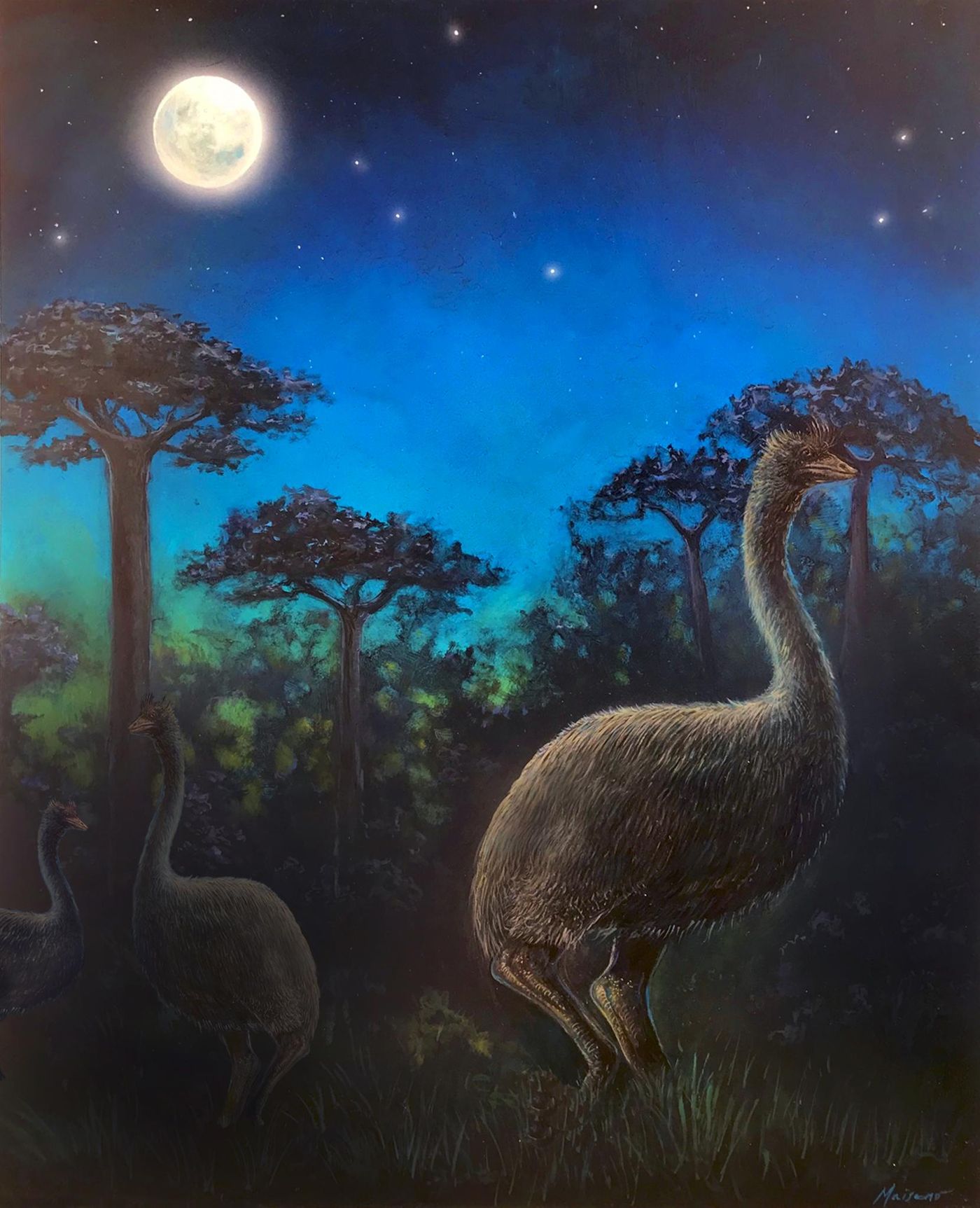Study Suggests Extinct Elephant Birds Were Nocturnal and Nearly Blind
Elephant birds were massive birds that went extinct a long time ago. Some estimates suggest the last of the species perished some 500 to 1,000 years ago, but researchers still study the enormous animals’ fossils to this day with the hope that we might learn something new about them. Fortunately, this persistence appears to be paying off.
Image Credit: John Maisano for the University of Texas at Austin Jackson School of Geosciences
Curious researchers from the University of Texas at Austin wanted to learn more about the elephant bird’s lifestyle. To do that, they conducted CT-imaging of two skull samples they had in hand to reconstruct three-dimensional models of their brains. The results of their analysis have been published this week in the journal Proceedings of the Royal Society B.
"Studying brain shape is a really useful way of connecting ecology—the relationship between the bird and the environment—and anatomy," explained Christopher Torres, the lead author of the study. "Discoveries like these give us tremendous insights into the lives of these bizarre and poorly understood birds."
Related: This African bird is new to science, and it's already in trouble
As it would seem, both skull samples displayed smaller-than-expected optic lobes, the part of the brain that handles vision. The findings are consistent with one of the elephant bird’s closest-living relatives, the kiwi, which sports nocturnal behavior and poor eyesight. Admittedly, this came as a bit of a surprise to the researchers.
Image Credit: Chris Torres for The University of Texas at Austin
"No one has ever suspected that elephant birds were nocturnal," Torres added. "The few studies that speculated on what their behavior was like explicitly assumed they were active during the day."
Related: This was the first modern-day bird extinction on the Galapagos
Scientists have long thought that elephant birds were diurnal creatures and sported decent eyesight, much like many other large, flightless birds like emus and ostriches. The notion that elephant birds were just the opposite of expected was a fascinating discovery that revolutionizes our understanding of the elephant bird and how it lived so long ago.
The CT-imaging also showed some distinct differences in the olfactory bulb in both skull samples. This part of the brain, which encompasses the sense of smell, was more prominent in the larger of the two skull samples and smaller in the tinier skull sample.
These findings imply that the larger elephant bird likely relied more heavily on olfaction and that it could have lived in a forest setting. The smaller elephant bird, on the other hand, probably lived in a more spacious environment, such as grasslands.
"Humans lived alongside, and even hunted, elephant birds for thousands of years," Torres said. "But we still know practically nothing about their lives. We don't even really know exactly when or why they went extinct."
Related: Researchers observe unexplained bird decline in New Mexico
Apart from its size, we know very little about the elephant bird today. Research of this nature helps scientists paint a better picture of what the planet was like before modern record-keeping, and gives us a better idea of why these animals aren’t around today.
Source: University of Texas at Austin, Proceedings of the National Society B










